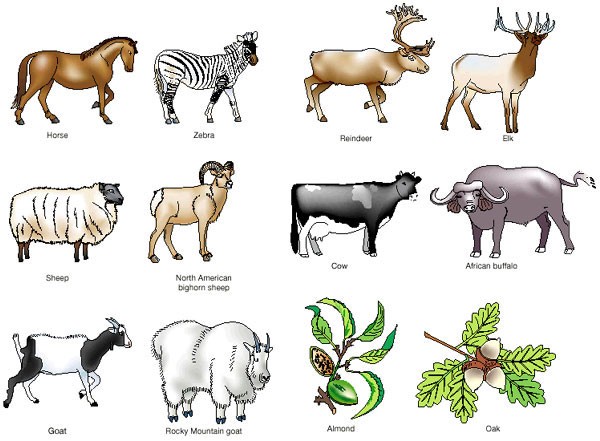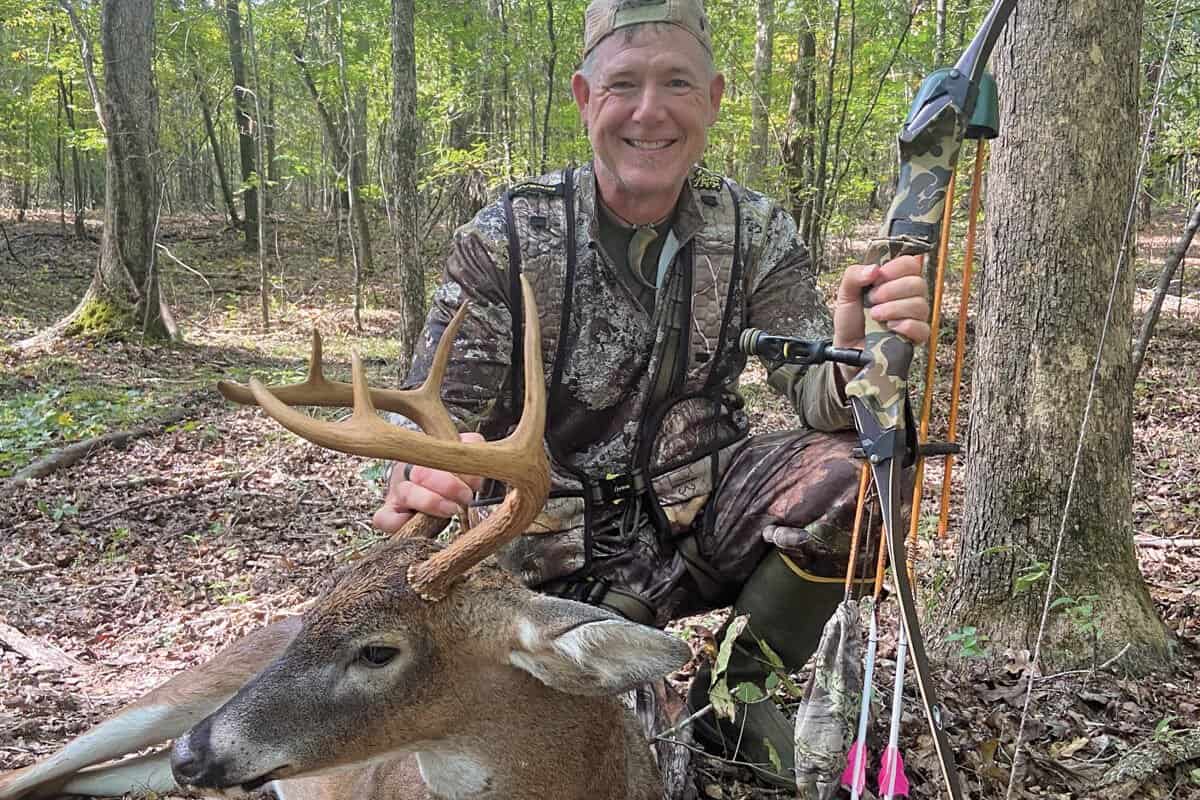Deer cannot be fully domesticated like dogs or cats. They remain wild in temperament and behavior despite human interaction.
Domesticating deer presents a unique challenge, as these graceful creatures retain their inherent wild instincts regardless of human contact. Unlike traditional domestic animals that have evolved through thousands of years of selective breeding, deer have not undergone such a process.
They possess a strong flight response to potential threats, making them unpredictable and often unsuitable for typical household living. This characteristic is vital for their survival in the wild but problematic in a domestic setting. While some deer can become accustomed to human presence, particularly if hand-raised from a young age, they are not domestic animals and do not adapt well to life within human-controlled environments. Understanding the nature of deer is essential for those considering their interaction with these animals – respect for their wild essence is paramount.

Credit: abcnews.go.com
Contents
The Fascination With Deer Domestication
Imagine soft eyes and graceful antlers peering through your window at dawn. The allure of taming such ethereal creatures has caught the hearts of many. Deer domestication speaks to a fantasy world where wildlife lives in harmony with humans. This dream fuels the ongoing interest to bring these wild creatures into our homes and lives.
Human-deer Relationships Through History
Deer have always been part of human culture. From ancient cave paintings to royal hunting grounds, these animals have existed alongside humans for millennia. Peoples around the world respected deer for their beauty and relied on them for survival. Some cultures even worshiped these majestic animals.
- Native American tribes saw deer as spiritual messengers
- Royal European courts viewed them as prized hunting pursuits
- Asian traditions included deer in myths and medicine
The Rising Interest In Keeping Deer As Pets
Modern times have seen a surge in the desire to keep deer as pets. Films and social media showcase tamed deer, making this fantasy seem reachable. People now seek out breeds like the gentle Muntjac or the palm-sized Pudu as companions.
| Breed | Size | Temperament |
|---|---|---|
| Muntjac | Small | Friendly, Docile |
| Pudu | Very Small | Shy, Reserved |
Despite the cute factor, keeping a deer is not without challenges. Zoning laws, space needs, and dietary requirements are all important considerations.
Have you ever wondered what it’s like to raise a fawn? Or wake up to a deer grazing in your yard?
Deer Biology And Behavior
Deer are majestic creatures with complex behaviors. They live in diverse habitats worldwide. Their biology and social structures are fascinating. Let’s explore if domestication is in the realm of possibility.
Understanding Deer Social Structure
Deer form various social groups depending on the species and environment. Some species are solitary except during mating seasons. Others live in herds. Below is a summary of their social behavior:
- Maternal groups: Does and their offspring create strong bonds.
- Seasonal herds: Deer may form larger groups for migration.
- Bachelor groups: Young males often band together.
Wild Instincts: Challenges In Taming Deer
Deer are naturally flighty and alert creatures. They have evolved this way to survive predators. Their instincts make domestication hard.
| Instinct | Challenge in Domestication |
|---|---|
| Strong Flight Response | Deer are easily frightened, leading to unpredictable behavior. |
| Foraging Behavior | They require vast, diverse territories to graze, which isn’t always possible in captivity. |
| Seasonal Migration | Migratory patterns are difficult to accommodate in a domestic setting. |
Comparing Deer To Domesticated Species
The concept of domestication often sparks curiosity regarding various animals. Among these creatures, deer stand out due to their grace and wild nature. This raises an intriguing question: Can we domesticate deer, and how might they compare to the animals we commonly welcome into our homes and farms? Let’s delve into this comparison, assessing their domestication potential against our beloved pets and farm animals.
Deer Vs Dogs And Cats: Domestication Metrics
Dogs and cats have long been part of human life. Their journey from wild animals to cuddly companions sets a benchmark for domestication. Here’s a look at how deer stack up against these family favorites.
- Social Structure: Dogs and cats adapt to human-led social hierarchies, while deer are independent and less inclined to follow.
- Reproductive Cycles: Dogs and cats can breed in controlled environments, but deer have more complex cycles tied to the wild.
- Temperaments: The predictability of dogs and cats is a result of selective breeding, a contrast to the naturally skittish nature of deer.
Livestock Parallels: Insights From Farming Practices
When we consider farm animals, certain parallels draw close to the concept of domesticating deer.
| Aspect | Livestock | Deer |
|---|---|---|
| Utility | Meat, milk, labor | Meat, hide |
| Environment | Controlled habitats | Free-range habitats |
| Behavior | Herding instincts | Solitary tendencies |
Cattle, sheep, and other farming animals possess traits favorable for domestication such as herding instincts and a tolerance for captivity. Deer, in contrast, require open spaces and retain a strong flight response, challenging their domestication.

Credit: www.nature.com
Case Studies Of Deer Domestication Attempts
Ever wondered if deer could share our homes like dogs or cats? People have tried to domesticate deer for centuries. The task is tricky but possible in some instances. Let’s explore a few case studies of deer domestication attempts.
Deer Farms: Successes And Limitations
Deer farms exist worldwide, raising deer for various reasons, such as meat, antler velvet, and farming experiences. Deer on farms may become tame, but true domestication is a different story. These animals retain a wild nature, and farming them involves understanding both their needs and natural behaviors. Let’s take a glance at what deer farms have achieved and their boundaries.
- Venison production: Farmers successfully breed deer for meat, a lean and healthy alternative to beef.
- Agricultural tourism: Deer farms attract visitors keen on wildlife interaction and education.
- Conservation: Some farms help conserve endangered species, supporting genetic diversity.
However, there are limitations:
- Deer can jump fences, making containment a challenge.
- They need large grazing areas mimicking their natural habitat.
- Human-deer conflicts may arise as they can be unpredictable.
Exotic Pet Owners’ Experiences With Deer
Tales from exotic pet owners reveal a multitude of experiences with deer as pets. Their stories shine a light on the intimate bond one can share with these graceful creatures. Yet, they also tell tales of hurdles and surprises.
| Owner Experience | Outcome |
|---|---|
| Bottle feeding fawns | Often leads to strong bonds, yet full domestication is rare. |
| Indoor living | Challenging due to space and deer’s need for outdoor environment. |
| Behavior Management | Training is complex; deer maintain natural instincts. |
Possessing a deer as a pet is not only legally complex but also demanding. While deer might adapt to human presence, their inherent traits persist. Ample space, the right diet, and understanding wild behaviors are vital. These stories underline domestication’s complexity, suggesting the line between wild and tamed remains distinct.
The Ethical And Legal Angle
Exploring the idea of deer domestication treads a delicate line between human interests and animal rights. Questions about the ethics and legality of domesticating deer are pivotal. They shape how we view our relationship with untamed wildlife. Let’s delve into the moral and lawful aspects that influence the domestication debate.
The Moral Implications Of Domesticating Wildlife
Deer are wild animals with natural behaviors and instincts. Changing their way of life for human benefit raises important ethical questions. It prompts us to consider the rightness of altering an animal’s essence for our desires.
- Does domestication impact their well-being and freedom?
- Can domestication ever fully meet their complex needs?
- Is there a cost to their physical and psychological health?
These points urge us to think deeply about our responsibilities. Wild animals, like deer, have lived without human intervention for centuries. Their well-being must be at the heart of our actions.
When it comes to ownership, every country and state has unique laws. We must understand and respect these rules. They are designed to protect wildlife and ensure ethical treatment.
Keeping wildlife, including deer, involves legal permits and requirements. Take a look at key legal considerations:
- Many areas have strict regulations against the ownership of native wildlife.
- Some regions require special licenses for owning deer or other wildlife.
- Animal welfare laws set standards for their living conditions and care.
- Violating these laws can lead to fines and even criminal charges.
It is essential to weigh these legal factors before exploring deer domestication. Ethical treatment and welfare align with legal standards. Together, they safeguard the interests of these majestic creatures.

Credit: currentpublishing.com
Considering The Future
Considering the Future invites us to ponder the relationship between humans and deer. It’s a future that may unfold with new approaches, including conservation efforts and innovative ways to live side by side with these majestic creatures. This section delves into possibilities that could redefine our interaction with deer in the years to come.
The Role Of Conservation In Domestication Debates
Conservation plays a critical role in discussions around domesticating deer. Can conservation contribute to responsible domestication? Let’s explore:
- Protecting Natural Habitats: Ensures deer thrive in the wild.
- Balancing Ecosystems: Prevents overpopulation and protects biodiversity.
- Regulated Intervention: Considerate approaches to interaction and care.
Preserving deer in their natural state can be balanced with controlled domestication under strict guidelines. Conservationists seek methods that maintain the integrity of wildlife populations while exploring domestication potentials.
Potential Paths For Human-deer Coexistence
Imagining a future where humans and deer coexist requires innovative thinking. Below are potential paths for a harmonious relationship:
- Education and Awareness: Teaching people about deer behavior and needs.
- Community Initiatives: Developing local projects for safe human-deer interactions.
- Habitat Sharing: Designing urban spaces that accommodate both deer and human activities.
By fostering understanding and respect, we pave the way for a world where deer can be appreciated in close proximity while respecting their wild nature.
Frequently Asked Questions On Can Deer Be Domesticated
Can You Domesticate Deer Like Pets?
No, deer are not typically domesticated like traditional pets. They are wild animals with instinctual behaviors and needs that do not suit household living. Domestication involves selective breeding over many generations, something not done with deer.
Do Deer Get Along With Humans?
Deer can become accustomed to humans, especially in areas where they are regularly fed or if they are hand-raised from a young age. However, even habituated deer remain unpredictable and can be dangerous, particularly during the mating season.
What Challenges Come With Domesticating Deer?
Domesticating deer presents several challenges, including their need for large roaming areas, specific diet, and the risk of transmitting diseases to humans and other pets. Additionally, deer behavior during mating season can be aggressive and unpredictable.
Are There Any Legal Restrictions On Keeping Deer?
Many regions have strict regulations or bans on keeping deer as pets to protect both the animals and the public. Potential owners must research and comply with local wildlife and exotic pet laws before considering keeping a deer.
Conclusion
Wrapping up, domesticating deer remains a complex issue. While some species may adapt to human care, true domestication is rare. It’s crucial for anyone considering this to weigh legal aspects and the deer’s welfare. Ultimately, despite the challenges, with appropriate commitment and knowledge, a semblance of domestication is possible.


